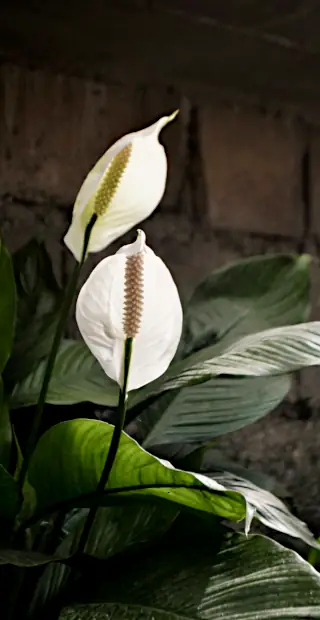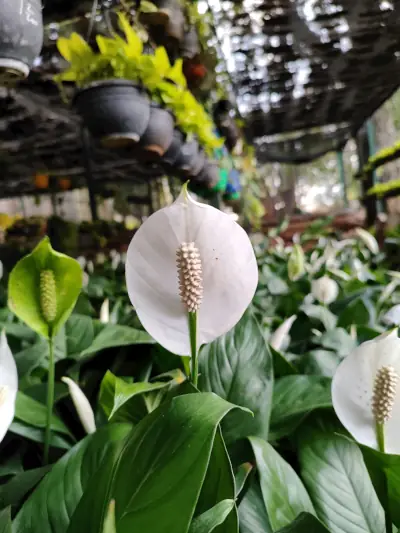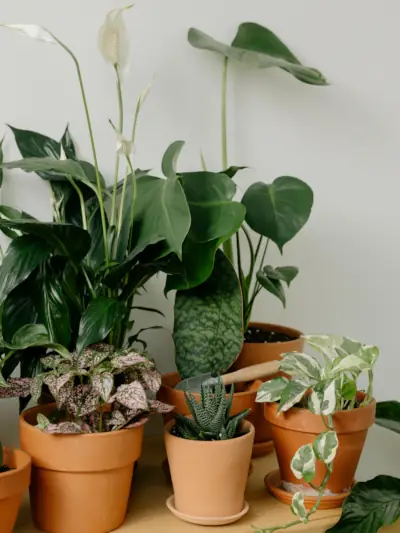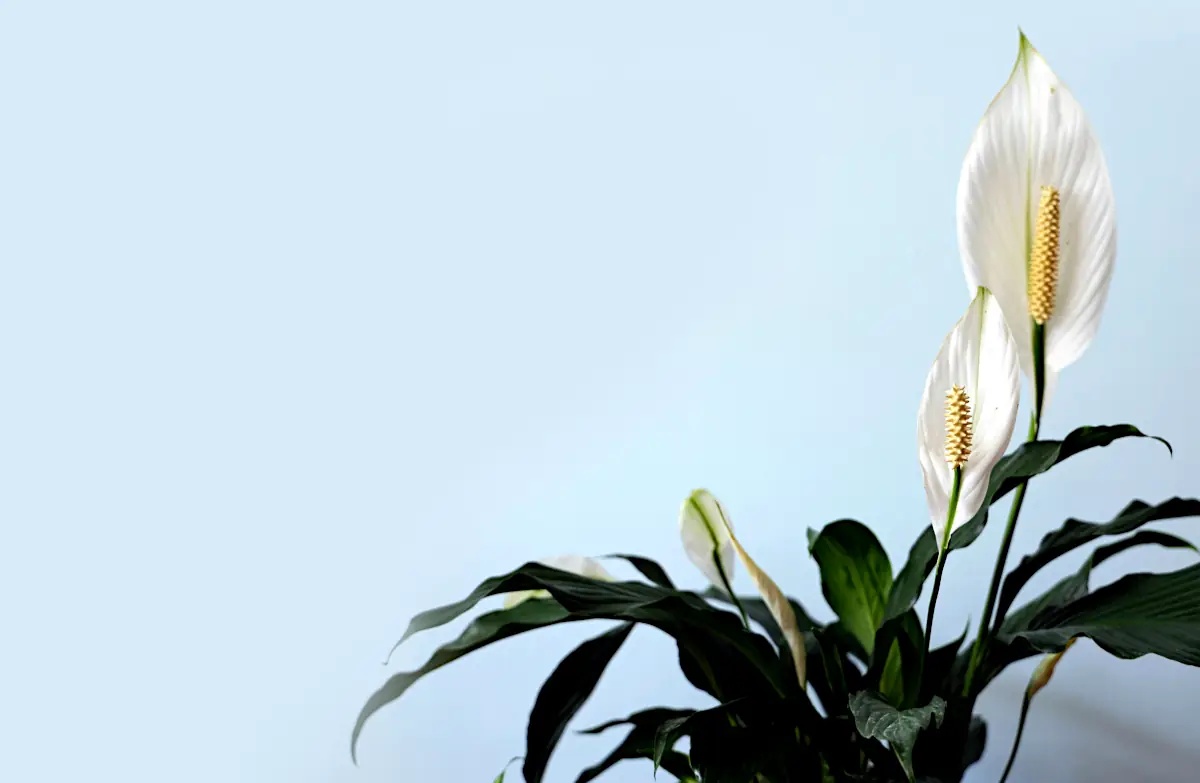Peace lily care is simple and rewarding, making this plant one of the most beloved indoor houseplants around the world. Known for its lush green foliage and elegant white blooms, the peace lily (Spathiphyllum) is perfect for beginners and seasoned plant lovers alike.
Whether you’re growing peace lilies from store-bought plants or caring for one passed down from a friend, this guide covers everything you need to know to keep your plant healthy and thriving.
Table of Contents
- How to Grow Peace Lily Plants
- Plant Profile
- Peace Lily Care Tips
- Did You Know?
- Common Problems and Solutions
- FAQs about Peace Lily Care
- Final Thoughts on Peace Lily Care
How to Grow Peace Lily Plants
The peace lily, or Spathiphyllum, is a tropical plant known for its beautiful white flowers and air-purifying qualities. It thrives as an indoor peace lily plant, but it can also grow outdoors in warm, shaded environments. Growing peace lilies successfully depends on understanding their light, soil, and watering needs. While they can tolerate low light, they bloom best in bright, indirect sunlight. With proper peace lily maintenance, these plants can bloom multiple times a year.
Plant Profile
| Feature | Details |
|---|---|
| Scientific Name | Spathiphyllum spp. |
| Common Name(s) | Peace Lily, White Sails, Spathe Flower |
| Plant Type | Evergreen perennial, houseplant |
| Best Climate / USDA Zones | Zones 10–12 (subtropical to tropical) (What are USDA zones?) |
| Preferred Light Conditions | Bright, indirect light |
| Watering Needs | Moderate; keep soil evenly moist |
| Soil Type | Well-draining, rich potting mix |
| Pet Safe or Toxic | Toxic to cats and dogs |
| Common Issues | Brown tips, wilting, yellow leaves |

Peace Lily Care Tips
- Light: Peace lily light requirements are moderate. Avoid direct sun, which can scorch the leaves. Instead, aim for filtered or indirect light.
- Watering: Peace lilies watering needs are moderate. Water when the top inch of soil feels dry. Avoid overwatering to prevent root rot.
- Humidity: They love humidity. Mist leaves regularly or place near a humidifier.
- Soil: The best soil for peace lily is a well-draining, nutrient-rich potting mix. Use a peace lily potting mix that includes perlite or coconut coir.
- Fertilizer: Apply a balanced fertilizer for peace lily plant monthly during the growing season. Use half-strength peace lily fertilizer to avoid overfeeding.
- Repotting: Repotting a peace lily every 1–2 years encourages healthy growth. Use fresh potting soil for peace lily and a slightly larger pot.
Did You Know?
- The peace lily flower isn’t actually a flower—it’s a specialized leaf called a spathe that surrounds a spadix.
- Peace lilies are among the top air-purifying plants, according to NASA’s Clean Air Study.
- You can grow peace lily in water by placing the roots in a vase, but regular peace lily plant care is still essential for success.


Common Problems and Solutions
Brown Leaves on Peace Lily: This usually indicates overwatering or low humidity. Adjust watering and increase humidity around the plant.
Peace Lily with Brown Tips: This is often caused by fluoride in tap water. Try using filtered or distilled water.
Peace Lily Not Blooming: Peace lily flower bloom can be encouraged with brighter (but indirect) light and consistent feeding with the best plant food for peace lily.
My Peace Lily Is Dying: If your plant is wilting and leaves are yellowing, check for root rot or extreme soil dryness. Repot and adjust care accordingly.
FAQs about Peace Lily Care
How often should I water my peace lily?
Water your peace lily when the top inch of soil feels dry. This is typically once a week, but more often in dry climates or heated homes.
What is the best pot for peace lily?
Use a pot with drainage holes and room for root growth. Terracotta or plastic pots with good drainage work best.
Can I grow peace lilies outdoors?
Yes, outside peace lily care is possible in USDA Zones 10–12. Keep them in shaded areas and protect from direct sun.
Final Thoughts on Peace Lily Care
With a little knowledge and consistency, peace lily care becomes second nature. These beautiful and resilient houseplants offer vibrant foliage and stunning white flowers year-round. Whether you’re repotting a peace lily, adjusting your peace lily watering routine, or choosing the best fertilizer for peace lily, each step helps you enjoy a healthier, happier plant. Follow these care instructions for a peace lily and your Spathiphyllum will reward you with beauty and grace.
If you’ve enjoyed learning about peace lily care and want to keep your indoor garden thriving, be sure to check out our guide to money tree care — another popular houseplant known for its beauty and symbolism. Or, browse more tips and plant profiles in our Houseplant Care category to discover new favorites and level up your green thumb!

